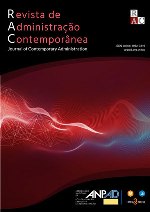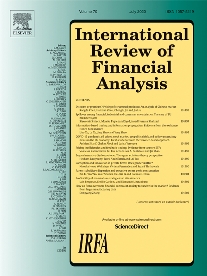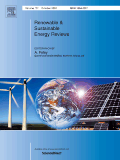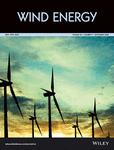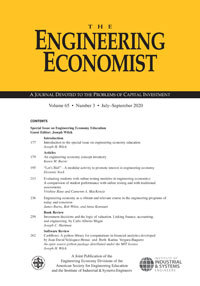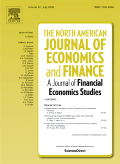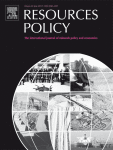Trabalhos recentes
A Tutorial for Modeling Real Options Lattices from Project Cash Flows (2020).
31 de August de 2020
Naielly Lopes Marques, Carlos de Lamare Bastian-Pinto, & Luiz E. T. Brandão (2020). Journal of Contemporary Administration, 25(1). doi: https://doi.org/10.1590/1982-7849rac2021200093
In this tutorial, we propose a code in an open-source software with intuitive guidelines to help researchers and practitioners model real options lattices from project cash flows. Our code considers the correct project’s volatility estimation, dividend yield modeling, and lattice building. The results show how real options can affect the value of projects. This tutorial provides a simple mechanism for analyzing investment opportunities in projects that have uncertainty and flexibility.
On the effects of uncertainty measures on sustainability indices: An empirical investigation in a nonlinear framework (2020).
Erick Meira de Oliveira, Felipe Arias Fogliano de Souza Cunha, Rafael Baptista Palazzi, Marcelo Cabus Klotzle, & Paula Medina Maçaira (2020). International Review of Financial Analysis, 70, 101-505. doi: https://doi.org/10.1016/j.irfa.2020.101505
We investigate the effects of uncertainty measures on the dynamics of sustainability indices across different regions of the globe in the post-crisis period under a multivariate Nonlinear Autoregressive-Distributed Lag (NARDL) framework. The results suggest that besides contributing to the Sustainable Development Goals, sustainability indices may serve as valuable tools to investors, asset managers and other stakeholders to dampen and/or offset the negative impacts of local and global measures of uncertainty, depending on the analyzed region.
Mitigating Hydrological Risk with Energy Derivatives (2019).
Gláucia Fernandes, Leonardo Lima Gomes, & Luiz Eduardo Teixeira Brandão (2018). Energy Economics, 81, 528-535. doi: https://doi.org/10.1016/j.eneco.2019.05.001
In this paper we propose an approach to formulating a collar derivative, namely an Inverted Collar, to mitigate hydrological risk considering the particularities of Brazil’s energy regulatory environment. In addition, we develop a customized collar-by-difference as a variation of the collar model. The results suggest that these derivatives are effective tools to manage hydrological risk during periods of great climatic volatility. The results also indicate that our models outperform traditional commercial hedging commonly practiced by hydropower producers in the country.
Valuing Multistage Investment Projects in the Pharmaceutical Industry (2018).
Luiz E. Brandão, Gláucia Fernandes, & James S. Dyer (2018). European Journal of Operational Research, 271(2), 720-732. doi: https://doi.org/10.1016/j.ejor.2018.05.044
We develop a real options model where the firm continuously updates its prospects of timely completion and future market conditions. We apply this model to a Research and Development (R&D) project in the pharmaceutical industry. We find that the opportunities to abandon and to expand into related markets have a significant impact on the value of the project as a whole. We show that for complex real options models, this method can be an effective way to value such projects.
A risk-hedging tool for hydro power plants (2018).
Gláucia Fernandes, Leonardo Lima Gomes, & Luiz Eduardo Teixeira Brandão (2018). Renewable and Sustainable Energy Reviews, 90, 370-378. doi: https://doi.org/10.1016/j.rser.2018.03.081
In this article we propose a redesign of energy contracts so that hydropower generators are allowed to sell part of their energy per water availability. By adding this flexibility, the contracting rules can more closely mimic the physical operation of the system, where energy sources can be optimally switched between hydro and thermal plants and the hydrological risk is reduced. The results suggest that this model can reduce the risk to the hydro generators with no impact on the total system cost.
Wind farm generation forecast and optimal maintenance schedule model (2019).
Jonas C. Pelajo, Luiz E.T. Brandão, Leonardo L. Gomes, & Marcelo C. Klotzle (2019). Wind Energy, 22(12), 1872-1890. doi: https://doi.org/10.1002/we.2405
We develop a model to determine the optimal maintenance schedule of a wind farm based on forecasted wind speeds and energy prices. We analyze a window of opportunity in the most likely period of the year and perform weekly updates of expected wind speeds and energy price forecasts. We test these models with actual data from a wind farm in the Brazilian Northeast. The results suggest that this model is close to the optimal stopping date considering perfect information on future wind speeds and electricity prices.
Crypto-assets portfolio optimization under the omega measure (2020).
Javier Gutiérrez Castro, Edison Américo Huarsaya Tito, Luiz Eduardo Teixeira Brandão, & Leonardo Lima Gomes (2020). The Engineering Economist, 65(2), 114-134. doi: https://doi.org/10.1080/0013791X.2019.1668098
The traditional portfolio analysis approach of Markowitz is not appropriate for use with portfolios containing crypto-assets, as the model requires that the investor have a quadratic utility function or that the returns be normally distributed. We develop a portfolio optimization model based on the Omega measure and apply this to four crypto-asset investment portfolios. The results indicate that these portfolios should favor traditional market assets over crypto-assets.
The Fama-French’s five-factor model relation with interest rates and macro variables (2020).
André Luis Leite, Marcelo Cabus Klotzle, Antonio Carlos Figueiredo Pinto, & Claudio Henrique da Silveira Barbedo (2020). North American Journal of Economics and Finance, 53, 101-197. doi: https://doi.org/10.1016/j.najef.2020.101197
Innovations in variables describing future investment opportunities command a risk premium and are correlated with Fama-French factors. In the presence of CPI, RMW loses its explanatory power, and all Fama-French factors lose their explanatory ability. We show that for US data, inflation’s innovations not only proxy for RMW, but a model including only excess market returns, shocks to CPI and term structure’s slope explain the cross section of average returns better than innovations to the previous literature’s four-variable set and Fama-French five-factor model.
A Real Options Model with Games Applied to the Rio de Janeiro Residential Real Estate Market (2019)
Glaudiane Lilian de Almeida, Marco Antonio Guimarães Dias, Luiz Eduardo Teixeira Brandao, & Carlos Patricio Mercado Samanez. Review of Business Management, 21(1), 118-135. doi: https://doi.org/10.7819/rbgn.v21i1.3966
We determine the optimal investment strategy in Nash equilibrium for the residential real estate market of Rio de Janeiro, considering the uncertainty in the demand for real estate and the number of active competitors in the market. The results show that the larger the number of competitors, the lower the level of demand required for investment in new units. This study modified the methodology of Grenadier (2002), providing a more adequate and robust specification of the uncertainty for the demand function
A dynamic model for valuing flexible mining exploration projects under uncertainty (2017)
07 de January de 2018
Oscar Miranda, Luiz E. Brandão, & Juan Lazo Lazo. (2017). Resources Policy, 52, 393-404. doi: https://doi.org/10.1016/j.resourpol.2017.04.002
In this article we develop a dynamic model for the assessment of the financial viability of flexible mining projects in the exploration stage (junior mines). We assume the firm has the option to defer the initial investment for a period of time, and once invested, has the additional flexibility to expand or even abandon the project. The model simulates the managerial decision making process and determines the value of the flexibility, or real options, associated with the mining project. On the other hand, for the case of firms that are listed in the stock market, the model assesses the likely impact of these options on the firm´s market value. We present a case study where we apply this model to a silver junior mining venture in Perú. The results indicate that the combined real options associated with the project may have a significant impact on its value, suggesting that the firm´s stock is undervalued by approximately 25%.
Feeder Cattle Options: Where’s the Beef? (2017)
Gláucia Fernandes, Luiz Eduardo Teixeira Brandão, & Carlos de Lamare Bastian Pinto. (2017). Latin American Business Review, 18(3-4), 317-339. doi: 10.1080/10978526.2017.1400391
Feeder cattle is one of the most important commodities in the livestock industry worldwide. Nonetheless, beef production is subject to many uncertainties; therefore, the risk management tools that agents use must be efficient. This article discusses the financial options available in the Brazilian futures market to feeder cattle producers and describes the best risk pricing model to determine the option premium. Our results consider several option pricing models and different types of volatility. The best pricing is obtained with the model of Bjerksund and Stensland with the implied volatility.
Mitigating wind exposure with zero-cost collar insurance (2016)
27 de December de 2016
Glaucia Fernandes, Leonardo Gomes, Gabriel Vasconcelos & Luiz Brandão (2016). Renewable Energy, 99, 336-346. doi: http://dx.doi.org/10.1016/j.renene.2016.07.016
Renewable energy generation worldwide has relied increasingly on wind farms where wind energy is transformed into electricity. On the other hand, electricity prices are uncertain and wind speeds are highly variable, which exposes the producer to risks. Typically wind power producers enter into long term fixed price contracts in order to hedge against energy price risk, but these contracts expose the wind farm to energy volume risk, as they require delivery of the full amount of energy contracted, even if energy production falls short due to low wind speeds. To mitigate this risk, wind producers can purchase insurance. This article proposes a zero-cost collar insurance and develop a stochastic model to determine the feasible range of wind strikes for both the wind farm and the insurer. The results indicate there is a set of possible strike combinations that meets the objectives of both parties.
Valuing flexibility in electro-intensive industries: the case of an aluminum smelter (2016)
Carlos Bastian-Pinto, Luiz Brandão, & Luiz Ozório (2016). Production, 26(1), 28-38. doi: http://dx.doi.org/10.1590/0103-6513.174214
Electro-intensive industries account for a significant proportion of the total industrial electricity consumption, and these industries usually possess co-generation assets, which can supply at least part of their energy needs. However, due to price uncertainty, it may be optimal for the firm to temporarily suspend production and sell the available energy. If this strategy creates value, governments can create incentives through price signals for these firms to take their plants offline and increase the supply of electricity during times of shortage. This study analyzes the case of an aluminum plant that has the choice of temporarily suspending operations and models its managerial flexibility as a bundle of European switch options. The suspension and modeling would occur under two simultaneous situations, uncertainty and asymmetric state switching costs under the real options approach, to determine whether the changes add value to the firm. The results indicate that this flexibility can add significant value to the firm.
Electricity prices forecast analysis using the extreme value theory (2016)
Mario Domingues de Paula Simões, Marcelo Cabus Klotzle, Antonio Carlos Figueiredo Pinto and Leonardo Lima Gomes (2016). International Journal of Financial Markets and Derivatives, 5(1), 1-22. doi: 10.1504/ijfmd.2016.076973
The present work attempts to evaluate the risk attached to electricity price forecasts. Initially, an analysis of prices series from different observation frequencies and, as expected, the volatility attenuation as a function of decreased observation frequency, for the same data, is observed. Next, a price forecast is made using a widely established and well used ARMA model. The distribution of residues of this forecast is modelled by a Gaussian curve and a generalised Pareto distribution, as well as its empirical distribution, following which the risk metrics VaR and CVaR are calculated. The Gaussian approximation shows to be appropriate for the estimation of forecast errors at low quantiles, up to 95%, for both daily and hourly data, but underestimates CVaR. The GPD distribution proves to be accurate and safe for the use of CVaR at any observation frequency, while it is introduced a novel GPD combination technique for the use of CVaR at extreme quantiles.
A model for valuing new technologies under a pull incentives (2016)
22 de January de 2016
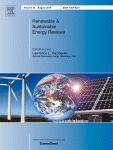
Glaucia Fernandes; Fernanda Perobelli; Luiz E. Brandão, (2016). Renewable and Sustainable Energy Reviews, 59, 482-493. doi: http://dx.doi.org/10.1016/j.rser.2016.01.007
In this article we propose an adaptation of a real option model for valuing R&D projects where we incorporate a pull incentive for the final product using a market sales function that decreases in time and is strictly positive over the product׳s life cycle. We apply this model to the case of the development of a Power Line Communication modem (PLC) for Smart Grids in the Brazilian electricity market, where a power utility firm agreed to bear part of the development risk by means of a minimum guaranteed demand, and solve using Monte Carlo simulation. The results suggest that this guarantee has significant impact on the project value, which is not captured by traditional valuation methods or even real option methods that do not incorporate this concept.
Incerteza e Flexibilidade na Pecuária de Corte Brasileira: o Valor da Opção de Confinamento (2015)
19 de January de 2016

Carlos Bastian Pinto, Alexandre Ramos, Luiz Ozorio, Luiz Brandão, BBR Brazilian Business Review, 12(6), 100-120
http://dx.doi.org/10.15728/bbr.2015.12.6.5
Neste trabalho, é avaliado o valor da flexibilidade operacional existente na pecuária brasileira advinda da alternativa para engorda de gado, por manutenção deste no pasto ou pelo confinamento. Esse importante setor da economia brasileira, segundo maior no mundo, é altamente pulverizado, apresenta pequenas margens de retorno e é sujeito a significativos fatores de incerteza. O confinamento, que aumenta a velocidade de engorda do gado quando comparada à manutenção deste no pasto, pode maximizar o retorno financeiro do pecuarista. Mas, para isso, a decisão de confinamento precisa ser tomada no momento correto. O confinamento também apresenta riscos relacionados à volatilidade dos custos de alimentação. Por meio da metodologia de opções reais, é avaliado o incremento de valor financeiro do negócio de engorda de gado advindo da flexibilidade existente de escolha do timing correto para transferir o gado do pasto para confinamento em presença das incertezas associadas. Os resultados indicam que há um incremento de retorno financeiro significativo proporcionado pela opção de confinamento, calculado como retorno por cabeça de gado. Estes também apontam para a importância do timing correto do confinamento de forma a maximizar o retorno.
Non linear models and the load of an electricity distributor. (2015)
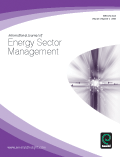
Mario Simoes, Marcelo Klotzle, Antonio Carlos Figueiredo and Leonardo Lima, International Journal of Energy Sector Management, vol 9(1), 38-56.
http://dx.doi.org/10.1108/IJESM-02-2014-0001
The purpose of this study is to ascertain whether nonlinearities could be present in electricity loads observed in subtropical environments, where none or little heating is required, and whether threshold autoregressive (TAR)-type regime switching models could be advantageous in the modeling of those loads. The actual observed load of a Brazilian regional electricity distributor from January 2013 to August 2012 was modeled using a popularly employed ARMA model for reference, and smooth and non-smooth TAR transition (non-linear) models were used as non-linear regime switching models. Evidence of nonlinearities were found in the load series, and evidence was also found on the intrinsic resistance of this type of models to structural breaks in the data. Additionally, to reacting well to asymmetries in the data, these models avoid the use of exogenous variables. Altogether, this could prove to be a definite advantage of the use of such model alternatives. However, even if the present work may have been limited by the observation frequency of the available data, it appears TAR models appear to be a viable alternative to forecasting short-term electricity loads. Nonetheless, additional research is required to achieve a higher accuracy of forecast data. If such models can be successfully used, it will be a great advantage for electricity generators, as the computational effort involved in the use of such models is not significantly larger than regular linear ones.To our knowledge, this type of research has not yet been made with subtropical/tropical electricity load data.
Investor´s Asymmetric Views and their Decision to enter Brazil’s Wind Energy Sector (2014)
10 de January de 2016
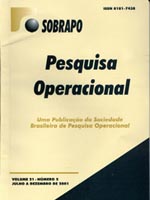
Dalbem, Marta Corrêa; Gomes, Leonardo Lima and Brandao, Luiz Eduardo Teixeira. 2014, Pesquisa Operacional, Vol.34, N.2, Pp. 319-345.
http://dx.doi.org/10.1590/0101-7438.2014.034.02.0319
Market players’ investment decisions sometimes surprise analysts, especially when projects that are less feasible in financial terms enter first in the market, before more viable projects. One possible explanation is that firms have different expectations concerning the future of the market. In this article we use the Option-Games approach for asymmetric duopolies to analyze investors’ decisions in the first auction for wind power in Brazil, held in 2009, in which some less viable firms pushed more viable firms out of the auction. Our analysis shows that even small differences in the investors’ views can yield this unexpected result. When uncertainty is low and expectations are symmetric, the outcome is a lower energy tariff as well as a stronger wind industry in Brazil, highlighting the importance of a clear and credible long term governmental policy, not only for the wind industry, but also for any other industry in its early stages.
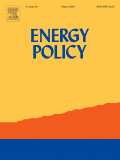
Can the regulated market help foster a free market for wind energy in Brazil? (2014)
02 de March de 2015
Marta Dalbem, Luiz Brandão, Leonardo Lima. Energy Policy 66 (2014) 303–311.
http://dx.doi.org/10.1016/j.enpol.2013.11.019
Wind energy has been negotiated in Brazil’s regulated market through auctions organized by the government. Bilateral negotiations in the free market have been scarce. In 2011 wind farms were allowed to bid in ‘A minus 5 (A-5)’ auctions, for energy with first delivery date 5 years ahead. This new design was expected to stimulate negotiations in the free market, as the 20-year contract in the regulated market eases financing while the 5-year grace period grants wind farms the option to sell whatever energy is generated beforehand in the free market. We modeled bidders’ price decision in A-5 auctions as Real Options and concluded that given the low prices averaging USD 50/MWh, winners are tempted to defer investment, expecting more favorable equipment and energy prices, or a better knowledge of the wind site. Construction is likely to begin in 2-3 years, with little time left for the free market. Bidders that consider the option of eventually abandoning the project are more price competitive, increasing chances that some wind farms will never materialize. Therefore, this attempt to foster the free market may not pay-off and, moreover, it may have the unfavorable effect of turning Brazil’s energy expansion planning a more difficult task.

Switching outputs in a bioenergy cogeneration project: A real options approach (2014)
14 de June de 2014
Denis de Oliveira, Luiz E. Brandao, Rafael Igrejas, and Leonardo Lima. Renewable and Sustainable Energy Reviews 36, no. 0 (2014): 74-8.
http://dx.doi.org/10.1016/j.rser.2014.04.023
Environmental concerns have stimulated the search for economically feasible renewable energy projects. In this article we analyze the feasibility of installing a cogeneration unit in an industrial plant in Brazil in order to extract value from biomass residue currently discarded, which can be used for thermal and electric energy generation. The cogeneration unit also allows the firm the flexibility to optimally choose between an increase in production or the generation of surplus energy for sale in the short term market, once additional investment in interconnection to the grid is made. We model the uncertainty over future energy prices as a mean reverting process with jumps and seasonality and the embedded flexibility as a bundle of European options under the real options approach. The results indicate that the investment in the cogeneration plant is warranted and that the option to switch outputs adds significant value to the project, which suggests that biomass residue may be a sustainable energy alternative in this case.
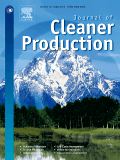
Elephant grass biorefineries: towards a cleaner Brazilian energy matrix? (2014)
18 de April de 2014
Carlos Frederico Fontoura, Luiz E. Brandão, Leonardo Lima. Journal of Cleaner Production (2014).
http://dx.doi.org/10.1016/j.jclepro.2014.02.062
The share of the Brazilian domestic energy supplied by renewable energy is the highest among all major economies in the world. Nonetheless, there are opportunities to increase this even further. One such opportunity is the adoption of biorefineries to replace the need for oil, coal, natural gas and other non-renewable energy sources with biomass. The fact that biomass has the flexibility to be converted into distinct outputs such as electricity, biofuels, charcoal and chemicals, along with the uncertainty regarding market prices, may allow the firm to create value from the optimal exercise of these embedded options. The objective of this study is to analyze the feasibility if converting a biomass power plant based on Elephant grass into a biorefinery. The analysis was conducted by adopting a hybrid commercialization model where part of the plant’s power generation installed capacity was sold through a 20 year long-term fixed supply contract and the remainder was optimally negotiated in the short-term market in the form electricity, charcoal or ethanol. The results show that the resulting NPVs of all biorefinery strategies were positive, which indicates that biorefineries using the commercialization scheme proposed in this study represent a feasible and interesting opportunity for a sustainable energy matrix diversification.
Avaliação de empresas start-up por Opções Reais: o caso do setor de biotecnologia (2013)

Pedro Rodrigues, Vicente Ferreira, Celso Lemme, Luiz Brandão. Gest. Prod., São Carlos, v. 20, n. 3, p. 511-523, 2013
http://dx.doi.org/10.1590/S0104-530X2013000300002
Este trabalho avaliou uma empresa start-up de biotecnologia à luz da teoria de Opções Reais. O objetivo principal foi averiguar a adequação deste modelo na avaliação de empresas inovadoras, sujeitas a grande risco, de forma a captar o valor das flexibilidades gerenciais presentes neste tipo de empreendimento. Para verificar a subavaliação provocada pelo método de Fluxo de Caixa Descontado ao desconsiderar o valor das opções, foi realizado um estudo de caso na empresa BioNatural, incubada no Polo BioRio de Biotecnologia, localizado no campus da Universidade Federal do Rio de Janeiro. Os resultados da avaliação financeira de um projeto de pesquisa específico indicaram uma subavaliação da ordem de 16%. Os resultados reforçam a visão de que a Teoria de Opções Reais pode ser mais adequada para avaliar empreendimentos sujeitos a extrema incerteza, captando um valor não mensurado pelas técnicas tradicionais de avaliação de projetos.
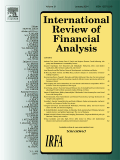
Investment decision in integrated steel plants under uncertainty (2013)
Luiz Ozorio, Carlos Bastian-Pinto, Tara Baidya, Luiz Brandão; International Review of Financial Analysis 27(0), 55-64.
doi: http://dx.doi.org/10.1016/j.irfa.2012.06.003
The production of steel in integrated plants typically implies greater investment, but is more cost-competitive as it provides greater economies of scale. The disadvantage of this method is that the furnaces need to work almost continuously through their life span, thus reducing the flexibility of production adjustment tomarket demands. To attenuate this problem, investments in lamination assets are commonlymade, generating the possibility of production diversification and valuable switch options. This work values an output switch option in a hypothetical integrated steel plant composed of a blast furnace and a hot laminator. Results show that this option can generate a significant increase in the NPV of blast furnace plants. Results also emphasize the importance of correctly choosing the stochastic process for the underlying uncertainty and the effect it may have on the switch option value.
Uma avaliação da volatilidade dos preços da soja no mercado internacional com dados de alta frequência. (2012)
21 de January de 2013

Mario Domingues Simões, Marcelo Cabus Klotzle, Antonio Carlos Figueiredo Pinto, & Gabriel Levrini, 2012. Gestão & Produção, 19(1), 219-231.
http://dx.doi.org/10.1590/S0104-530X2012000100015.
Neste trabalho foram avaliados os ajustes de cinco modelos para previsão da variância, utilizando-se uma série de preços de soja, uma commodity negociada na bolsa de mercadorias de Chicago (CBOT), com dados de alta frequência. Os modelos utilizados foram do tipo GARCH, FIGARCH e ARFIMA. Foi possível observar características desta série de preços de umacommodity negociada globalmente que se apresentaram inteiramente diferentes daquelas de ativos financeiros anteriormente estudados, possivelmente em virtude da característica contínua dos preços observados, induzida pela sua negociação global independente de pregões com início e fim. Foi possível concluir que a série de dados de alta frequência encerra informações adicionais às séries de dados diários, também no caso estudado de preços da soja, e que o tradicional modelo GARCH(1,1) tem um bom desempenho também no caso dos dados de alta frequência, assim como aqueles da família ARFIMA.
Government Supports in Public–Private Partnership Contracts: Metro Line 4 of the São Paulo Subway System (2012)
10 de January de 2013
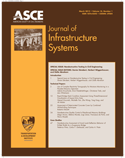
Luiz E. Brandão, Carlos Bastian-Pinto, Leonardo Lima Gomes, & Marina Labes (2012). Journal of Infrastructure Systems, 18(3), 218-225.
http://dx.doi.org/10.1061/(ASCE)IS.1943-555X.0000095, 218-225.
Em novembro de 2005, o governo do estado de São Paulo, Brasil, anunciou a intenção de oferecer um contrato de 30 anos para construir, operar e explorar os serviços de passageiros para a Linha de Metro 4 do Metrô de São Paulo. Dado o alto risco do projeto, para atrair investidores privados, o edital estipulava que o governo iria oferecer mecanismos de mitigação do risco tais como pagamentos de subsídios e uma garantia de demanda mínima (GDM). Tendo a GDM características semelhantes a de uma opção, a abordagem opções real é usada para analisar o efeito desses incentivos sobre o valor e os riscos do projeto de concessão Metro Linha 4, e seu custo e risco para o governo. Os resultados indicam que os incentivos propostos são eficazes na redução do risco e aumentam o valor líquido do projeto em 36% a um custo para o governo de 5% do valor total do projeto. Além disso, mostra-se que para um dado custo, os mais eficazes mecanismos de redução de risco são aqueles que incluem uma garantia de demanda mínima superior relativa ao pagamento subsídios.
Volatility estimation for stochastic project value models (2012)
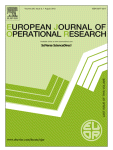
Luiz E. Brandão, James S. Dyer, & Warren J. Hahn (2012). European Journal of Operational Research, 220(3), 642-648.
http://dx.doi.org/10.1016/j.ejor.2012.01.059
Um dos parâmetros-chave na modelagem de decisões orçamentária de capital para investimento com opções embutidas é a volatilidade do projeto. Na maioria das vezes, no entanto, não há mercado ou dados históricos disponíveis para fornecer uma estimativa precisa para este parâmetro. No entanto, o método de simulação da estimativa originalmente sugerida para este propósito, sistematicamente sobrestima a volatilidade do projeto, o que pode resultar em valores incorretos para a opção e decisões ineficientes de investimento. Neste artigo, mostramos analiticamente a origem da sobrestimação e o ajuste necessário para corrigi-lo. Em seguida, padronizamos o desenvolvimento para os casos de fluxos de caixa alavancados e volatilidade não constante. Em cada caso, usamos um problema exemplo para mostrar como uma metodologia revisada pode ser aplicada.
Incentivos governamentais em PPP: uma análise por opções reais (2012)

Luiz E. T. Brandão, Carlos Bastian-Pinto, Leonardo Lima Gomes, & Marina Schwab Salgado (2012). Revista de Administração de Empresas, 52(1), 10-23.
Em novembro de 2005, o Governo do Estado lançou edital de licitação para serviços de transporte de passageiros da Linha 4 do Metrô de São Paulo. Neste trabalho, utilizamos a metodologia de opções reais para modelar o impacto dos incentivos governamentais existentes no contrato de concessão sobre o valor do projeto, determinar o grau de redução de risco obtido e o seu custo para o Estado. Os resultados indicam que estes incentivos são eficazes em reduzir o risco do projeto e aumentam o seu resultado em 36%, a um custo para o Estado de 5% do valor total do projeto. Adicionalmente, analisamos também a relação custo/benefício para o Estado de modelos alternativos de mitigação de risco e mostramos que, sem aumentar o custo para o governo, a eficácia desse mecanismo pode ser incrementada aumentando-se o peso da parcela de garantia de demanda em relação à parcela de contraprestação.
Análise da Dinâmica do Mercado a Termo de Energia Elétrica no Brasil (2012)

Cristina Pimenta de Mello Spineti Luz, Leonardo Lima Gomes, & Luiz Eduardo Teixeira Brandão (2012). Revista Brasileira de Gestão de Negócios, 14(44), 314-334.
Na década de 1990, diversos países, inclusive o Brasil, iniciaram a reestruturação de seus setores elétricos e criaram mercados livres para negociação de energia. O crescimento desses mercados tem demandado a adaptação de instrumentos financeiros de gestão de riscos e retornos a suas especificidades. No Brasil, o mercado tem, ainda, uma estrutura de balcão descentralizada, o que dificulta seu estudo e análise. Os contratos a termo de energia elétrica, negociados bilateralmente no país, são o principal instrumento para a mitigação de riscos e a avaliação de investimentos. Nesse contexto, o objetivo deste estudo é compreender melhor a dinâmica dos preços a termo de energia elétrica praticados no Brasil. Assim, é proposto um método para a construção de curvas a termo com base apenas em informações de mercado. Os resultados indicam que o mercado brasileiro a termo de energia elétrica apresenta comportamento contango em alguns períodos, elevados prêmios de risco e aderência apenas relativa dos preços a termo às expectativas de futuros preços à vista. Estudos realizados a partir de mercados estruturados de energia elétrica suportam essas evidências.
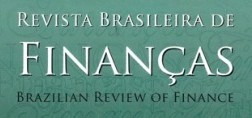
Reversão à Média com Tendência e Opções Reais na Siderurgia (2012)
Luiz de Magalhães Ozorio, Carlos de Lamare Bastian-Pinto, Tara Keshar Nanda Baidya, & Luiz Eduardo Teixeira Brandão (2012). RBFin – Brazilian Review of Finance, 10(2), 215-241.
O aço é uma commodity de grande variabilidade de preços e a escolha do processo estocástico que melhor represente suas possíveis trajetórias no tempo é fundamental para avaliação de opções reais em projetos siderúrgicos. Como verificado em outras commodities, entende-se que os preços do aço possam ser guiados por um componente de reversão à média, mas a análise de algumas questões econômicas ligadas à sua produção sugere que estes preços possuam também componentes de tendência ascendente, que elevam sua média de longo prazo à medida que o tempo evolui. Este trabalho apresenta um modelo denominado Reversão à Média com Tendência (MRM-T), no qual é incorporada uma tendência determinística ao nível de equilíbrio de longo prazo com a intenção de capturar o aumento do custo marginal de produção do aço e analisa as implicações do uso desse modelo na avaliação de projetos na indústria siderúrgica.
Decisão de sazonalização de contratos de fornecimento de energia elétrica no Brasil através da otimização da medida Ômega (Ω) (2011)
07 de January de 2013
![]()
Mario Domingues Paula Simões, & Leonardo Lima Gomes. REAd. Revista Eletrônica de Administração (Porto Alegre), 17(1).
Desde o final dos anos 90, o setor elétrico brasileiro vem passando por grandes reformas, cujos principais objetivos são aumentar a competição e a eficiência na alocação de recursos. Exatamente em função deste aumento de eficiência na alocação de recursos e devido ao consumo sazonal de energia no Brasil, foi estabelecida uma flexibilidade para as hidrelétricas conhecida como sazonalização. A sazonalização permite que a cada ano o agente de geração declare para o próximo ano o quanto é a energia mensal respeitando-se certos limites. Neste artigo, propõe-se um modelo de análise de decisão da sazonalização a partir da otimização da medida ômega com restrições de valor em risco, a qual consegue incorporar todos os momentos de uma distribuição de probabilidade numa análise de decisão. Para o cálculo desta medida, utiliza-se simulação dos preços de curto prazo. Aplica-se este modelo ao caso de uma pequena central hidrelétrica. Os resultados indicam que a decisão de sazonalização muda substancialmente quando há restrição de valor em risco (Value at Risk – VaR), fazendo com que a decisão ótima fique mais próxima de uma alocação uniforme ao longo do ano. Quando não há restrição de VaR, a decisão ótima difere consideravelmente da alocação uniforme.
Opções de swing no mercado brasileiro de energia elétrica (2011)
06 de January de 2013
Mario Domingues de Paula Simões, Denis Luis de Oliveira, Antonio Carlos Figueiredo Pinto, Marcelo Cabus Klotzle, & Leonardo Lima Gomes. Revista de Economia e Administração (Impresso), 10 (4), 591-610.
O presente trabalho tem como objetivo apreçar opções de swing no mercado brasileiro de energia elétrica. Os dados do ativo subjacente consistem em 406 observações de preços de liquidação de diferenças (PLD), entre janeiro de 2003 e setembro de 2010, que foram modeladas através de um modelo aritmético de reversão à média de Ornstein-Uhlenbeck. Para o apreçamento das opções, o ativo subjacente foi modelado através de uma árvore trinomial de multi-camadas (Forest), com o auxilio de uma rotina implantada no programa Matlab®, sendo adotado o método de programação dinâmica utilizando a técnica de trás-para-diante. Os resultados demonstram que o valor das opções de swing adicionais em um contrato é decrescente com o número de opções embutidas. Após análise de sensibilidade a vários parâmetros da modelagem e contratuais, foi constatada relação direta entre prazo e volatilidade do contrato com o valor das opções, e relação indireta entre este último e a velocidade de reversão à média, a taxa livre de risco e o preço de exercício.
